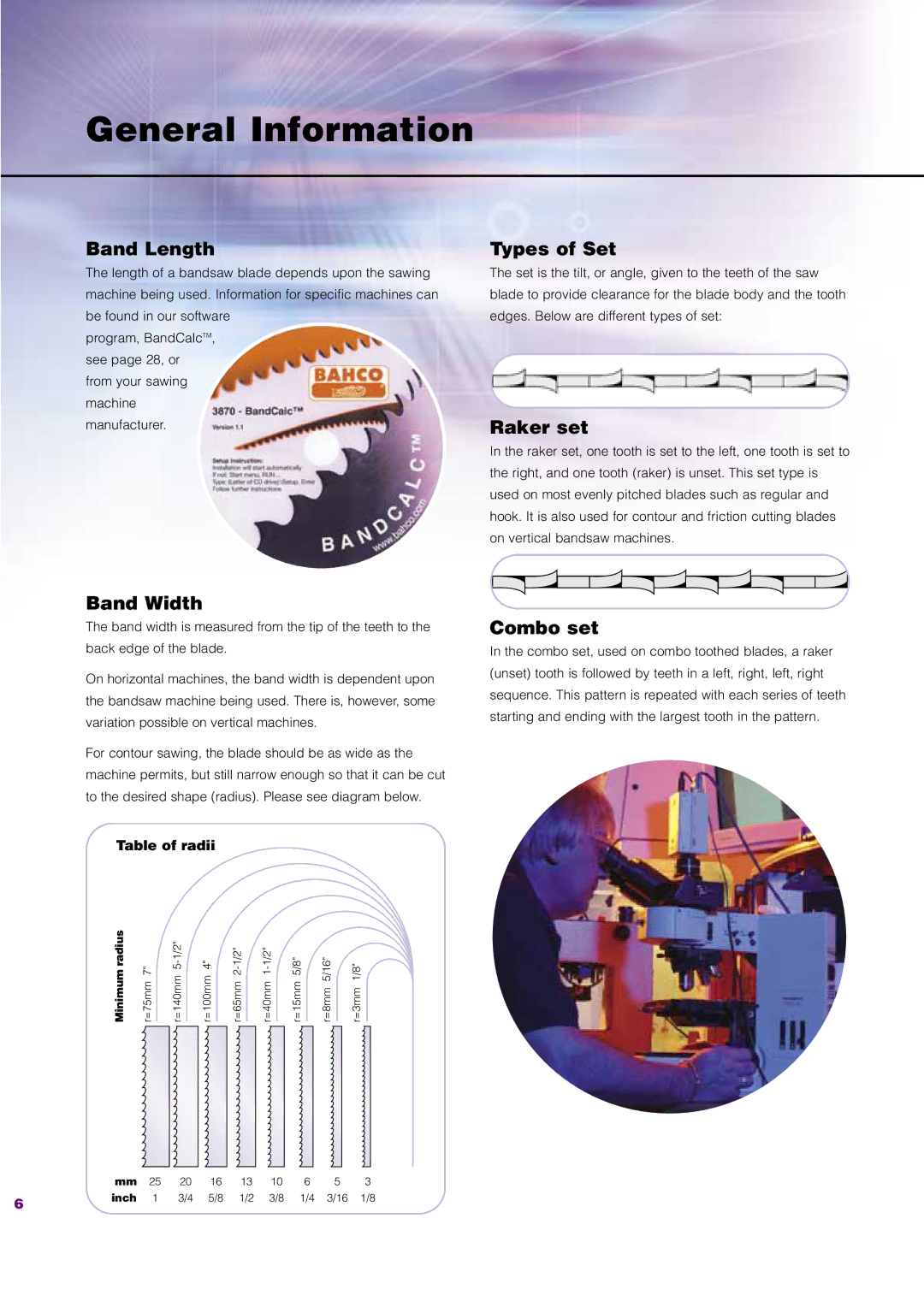
General Information
Band Length | Types of Set |
The length of a bandsaw blade depends upon the sawing machine being used. Information for specific machines can be found in our software
program, BandCalcTM, see page 28, or from your sawing machine manufacturer.
Band Width
The band width is measured from the tip of the teeth to the back edge of the blade.
On horizontal machines, the band width is dependent upon the bandsaw machine being used. There is, however, some variation possible on vertical machines.
For contour sawing, the blade should be as wide as the machine permits, but still narrow enough so that it can be cut to the desired shape (radius). Please see diagram below.
Table of radii
Minimum radius | r=75mm 7" | r=140mm | r=100mm 4" | r=65mm | r=40mm | r=15mm 5/8" | r=8mm 5/16" | r=3mm 1/8" |
| mm | 25 | 20 | 16 | 13 | 10 | 6 | 5 | 3 |
6 | inch | 1 | 3/4 | 5/8 | 1/2 | 3/8 | 1/4 | 3/16 | 1/8 |
|
|
|
|
|
|
|
|
|
The set is the tilt, or angle, given to the teeth of the saw blade to provide clearance for the blade body and the tooth edges. Below are different types of set:
Raker set
In the raker set, one tooth is set to the left, one tooth is set to the right, and one tooth (raker) is unset. This set type is used on most evenly pitched blades such as regular and hook. It is also used for contour and friction cutting blades on vertical bandsaw machines.
Combo set
In the combo set, used on combo toothed blades, a raker (unset) tooth is followed by teeth in a left, right, left, right sequence. This pattern is repeated with each series of teeth starting and ending with the largest tooth in the pattern.
